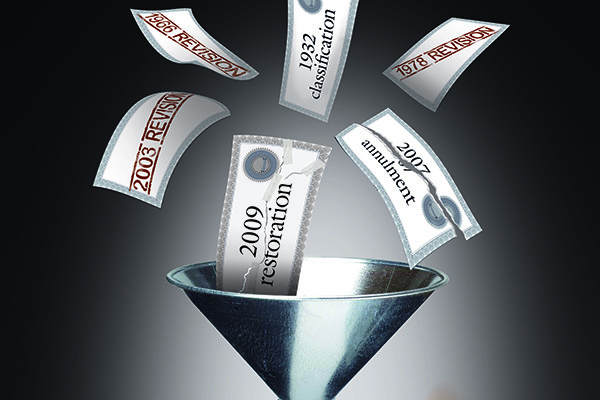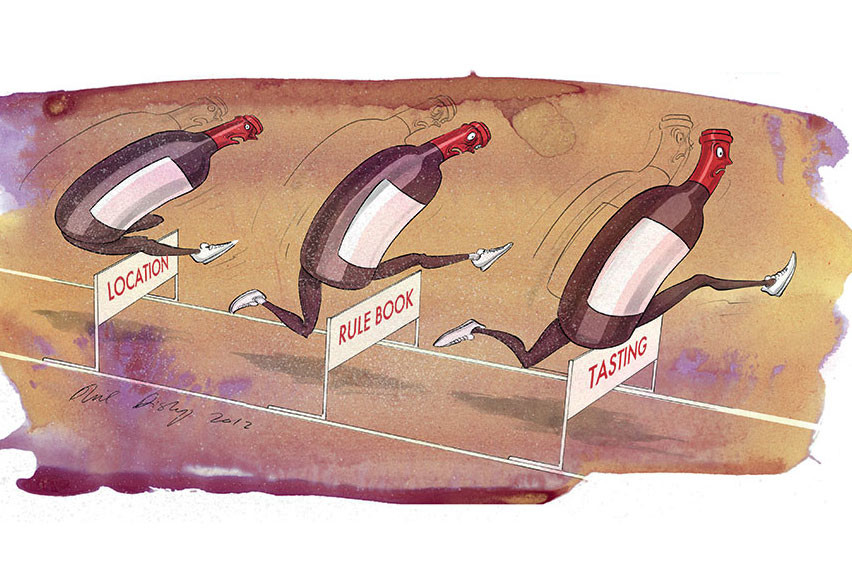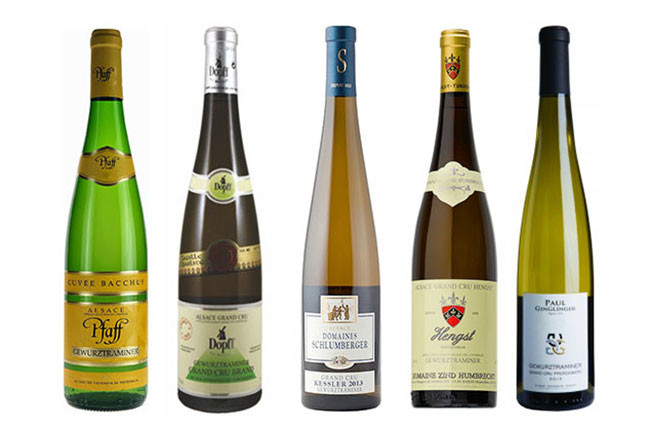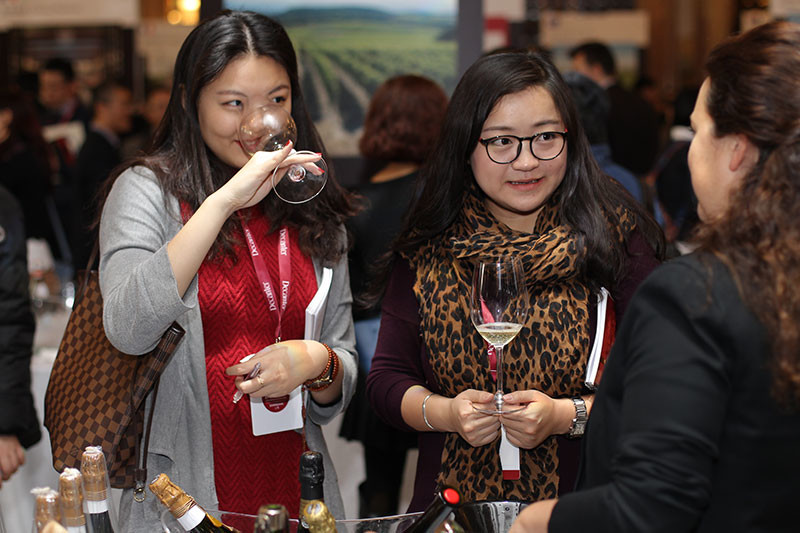For some time now, we’ve been hearing whispers about the potential creation of a 1er Cru category for Alsace wines.
Olivier Humbrecht MW has been appointed as president of the “hierarchisation committee”, and as I’ve just spent two weeks working at his winery, it would have been a shame not to question him about what might change in the way we introduce this fantastic wine region.

The Alsace wines hierarchy as today
For the time being, Alsace still wines are officially divided into two levels: there is the “Appellation Alsace Protégée” (Alsace AOP) which makes about 95% of the wines with Geographical Indication produced in the region. The remaining 5% are produced from the best vineyards and sold under the “Appellation Alsace Grand Cru Protégée”. It seems simple, but things become slightly puzzling when you consider that the first level (Alsace AOP) actually comprises three sub-categories: 1- the general Alsace wine, 2- wines with a complementary geographical denomination and 3- the lieux-dits wines (see figure 1).

The regional Alsace AOC/AOP was created in 1945 and covers over one hundred villages within the Bas-Rhin and Haut-Rhin departments.
The thirteen "complementary denominations" are delimited areas which have built a strong reputation over time for producing wines with peculiar qualities such as Ottrot for its red wines made from Pinot Noir, or Klevener de Heiligenstein for producing a dry white wine made from Klevener (the local name for Savagnin Rose).
Contrarily to the "complementary denominations", the areas for the “lieux-dits” aren’t defined in the “cahier des charges”, still if one mentions a specific vineyard name on his/her label, he/she must comply with stricter production rules, notably lower maximum yields (68 hl/ha instead of 80 hl/ha for a regional Alsace wine for instance).
Finally, the first Grand Cru was recognised in 1975 (Schlossberg) and the last one in 2007 (Kaefferkopf). In 2011, all the 51 Grands Crus were recognised as independent AOP, each of them having to comply with specific production rules.
The Alsace wines hierarchy tomorrow
Now, what would change if the new classification is approved by the INAO?
First of all, the wines with a complementary denomination would be removed from the regional category and “upgraded” to a new level called the “village” wines. They would be recognised as independent AOPs, with specific production rules or “cahier des charges”.
Then, and that’s the main focus of discussion, some high-quality lieux-dits that have shown consistency over time would be gathered into a new Premier Cru (1er Cru) category, with specific production rules as well (cf figure 2).

Reasons for modifying the hierarchy
Why modifying a “classification” that has been in place for so many years? I can think of several reasons.
The first one is, where many people think this new classification will complicate consumers’ understanding of Alsatian wines, I actually see a simplification of the pyramid (please stop thinking that consumers can’t deal with four layers!)
The current framework, with a bottom-level and a top-level, is over-simplistic. Wines of relatively high quality are currently drowned within entry-level products, and producers (and consumers) can’t refer to an intermediate shelf that would suit wines considered, qualitatively-speaking, in-between the regional and the Grand Cru appellations.
This is a bit like a clothes shop which space would be solely divided into “S” and “XL” sizes areas, and where all “M” and “L” sizes would be merely stuffed in the “S” area. The seemingly simple layout just makes things messy.
Another reason is that this new classification is expected to raise the general quality up. As mentioned above, all the 1er Crus wines will be current lieu-dit wines which have shown consistency over time (of quality, reputation and prices).
If the INAO validates the project, producers will have to comply with lower yield requirements to market them as “1er crus” (57 hl/ha instead of 68 hl/ha). Moreover, each 1er Cru area will have to demonstrate a “geological unity” (unité géologique), meaning that the soil type, the slope angle and the orientation among others of a 1er Cru vineyard would have to be homogenous throughout its delimited boundary. The area delimitation of the 1er Crus is thus expected to be much more drastic that that of the Grand Crus.
Finally, if this hierarchisation is validated by the INAO, this means that each "village" or "1er Cru" appellation would have its own Appellation d'Origine Protégée, and as you've certainly noticed, the move from the former Appellation d'Origine Contrôlée to a "Protégée" status in 2007 implies that not only is the origin guaranteed by control, but that it is "protected", which means that no other region in the world (at least in Europe and countries which have signed agreements with the EU) would be able to use these AOP names.

The debate
During my stay in Alsace, I encountered very few people who were against this new hierarchisation. Some raised the slightly bitter-sounding concern that this new classification will mainly favour iconic and large-scale producers who already possess high quality vineyards and who will therefore see the value of their real estate increase further more.
When I raised the point that this increase should also profit small producers owning vines on potential 1er Cru sites, they rightly retorted that the current generation may indeed benefit from a value increase of their land, but that this will become a real burden for their children who might struggle to pay the prohibitively high inheritance taxes in force in France (not to mention the likely increase of property taxes), and that we might thus witness the gradual disappearance of artisan growers.
Although you could argue that the new classification might help them expect higher incomes, it is also true that many producers don't have the power to raise their prices in order to cover the costs of lower yields and simultaneously generate higher margins.
Such a transition can only be made over many, sometimes financially-tearing years, and requires a strong awareness from the producers.
The second concern of the reform’s detractors is the ambiguous qualitative relation between Grand Crus and Premier Crus.
As mentioned above, the 1ers Crus vineyards will be delimited in a stricter way than the Grands Crus were. Moreover, with a yield limit of 57 hectolitres per hectare, the production requirements are almost the same as those for Grands Crus wines.
They therefore worry that many 1er Crus will overshadow lower-quality Grands Crus, commanding higher prices and eventually complicating consumers' understanding. A producer told me that he would actually prefer to raise the number of Grands Crus rather that creating a “misnamed category”.
Personally, I am in favour of such a classification as I do believe it will help drawing a clearer picture of Alsace wines’ hierarchy; and a clearer discourse is always beneficial for customers’ understanding, and consequently for sales.
From a wine lover point of view, I do think this new category will encourage some growers to raise their quality standards, and the severe delimitation of the parcels may actually help bottle-in a bit more of terroir in this varietal-driven region.
Regarding the argument about the potential disappearance of small producers, I am afraid that this is a general trend in France that won’t be avoided by boycotting this classification. And if some 1ers Crus happen to perform better than some Grands Crus, I am sure time will come when they will be dully upgraded.

The only thing I find slightly frustrating is the status of some lieux-dits wines which are planned to remain within the bottom-quarter of the pyramid, despite more severe yields requirements (68 hl/ha instead of 72 hl/ha) and area delimitations than for village wines。
Another thing which slightly tickles me is that some village appellations won't necessarily cover the Grands Crus and/or 1ers Crus located within their administrative territory. But this is for the better as the ‘village’ appellation would have to show a ‘geographical unity’.
For instance, Olivier Humbrecht MW explains that grapes coming from the famous Grand Cru ‘Brand’ couldn't be used to make a Turckheim AOP (the name of the village where the Brand is located) because the Grand Cru's soil is mostly made up of granite, while that of Turckheim's main area, around the Fetch River fan, is mainly alluvial.
He further emphasizes that “it is almost impossible to find a village in Alsace which would possess a uniform geographical identity throughout its territory”.
Besides this geographical homogeneity, Eric Kintzler of Domaine Kientzler also points out that some village AOPs would also be linked to a certain style of wine. For instance, the producers of Ribeauvillé wish that their village appellation is only attributed to white wines without residual sugars.
After interviewing several estate owners, I’ve come to realise how difficult it is to deliver a consensual project that would be enthusiastically praised by every single winegrower.
The world of wine isn’t simply divided between iconic, quality-driven producers and industrial, mass-market-oriented factories. A very diverse and complex world exists in-between, with priorities and concerns which ought to be taken into consideration.
Nevertheless, I do believe that the sustainability of any industry depends essentially on the on-going improvement of its products and/or services’ quality, and any initiative ‘sparking off a general emulation, even if slightly shaky’ as put by Olivier Humbrecht, is worth pursuing and/or encouraging.
Now let’s cross fingers and hope that the infamously tedious French administration won’t take ages before allowing “Alsace 1er Cru – Clos Windsbuhl” to appear on a label…
Read on the next page:
Five wines produced from potential 1er Cru vineyards chosen by Julien Boulard
Translated by Sylvia Wu / 吴嘉溦
All rights reserved by Future plc. No part of this publication may be reproduced, distributed or transmitted in any form or by any means without the prior written permission of Decanter.
Only Official Media Partners (see About us) of DecanterChina.com may republish part of the content from the site without prior permission under strict Terms & Conditions. Contact china@decanter.com to learn about how to become an Official Media Partner of DecanterChina.com.










Comments
Submit